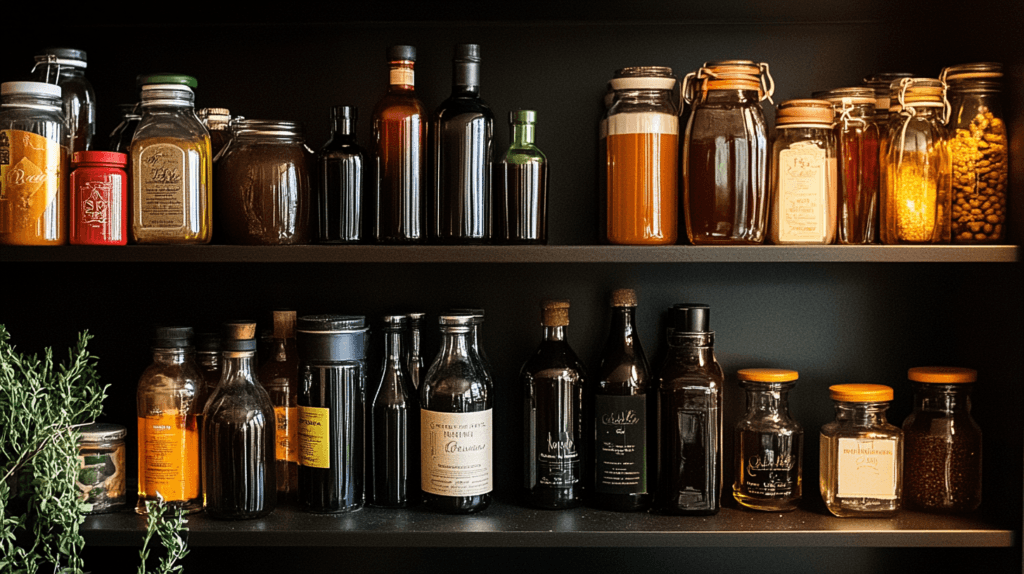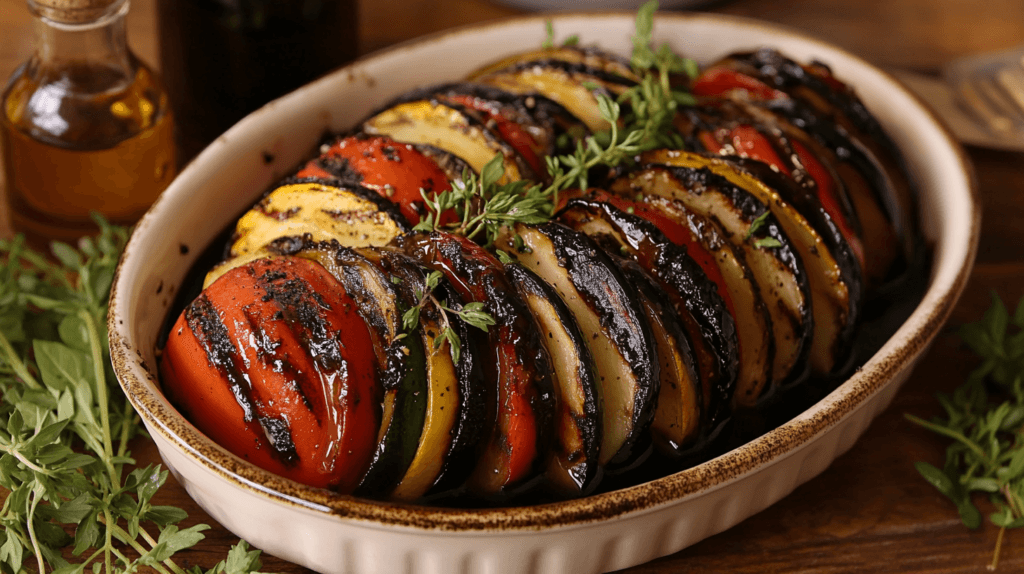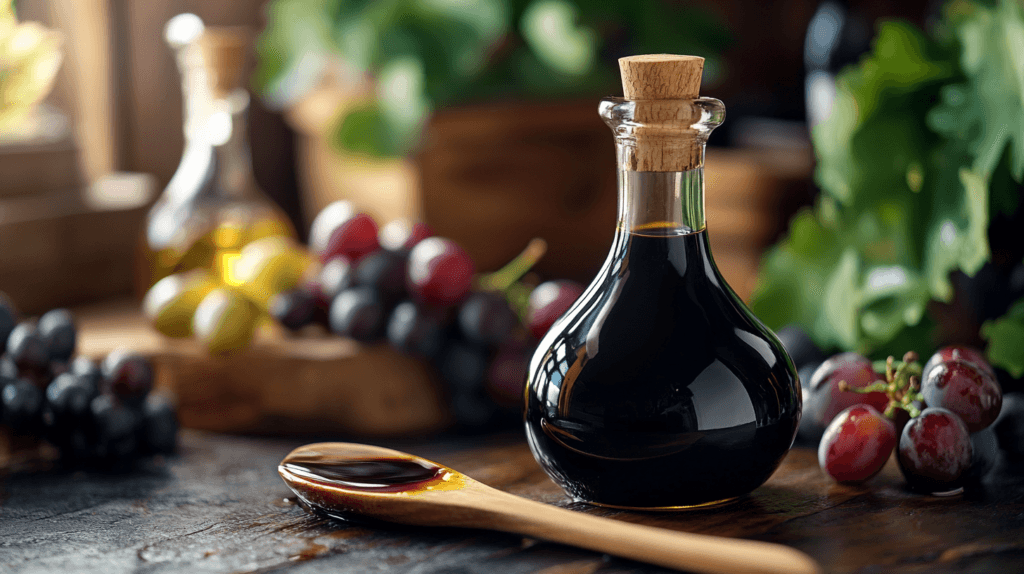A beloved condiment enjoyed worldwide for centuries, this rich, tangy ingredient adds versatility to salads, marinades, and even desserts. However, you might find an old bottle in your pantry and wonder, “Does balsamic vinegar go bad?”
In this article, we’ll explore everything you need to know about the shelf life of balsamic vinegar, how to store it properly, and what signs indicate it’s time to toss the bottle.
Table of Contents
What is Balsamic Vinegar?
It is a dark, syrupy vinegar known for its sweet and tart flavor profile. It originates from Italy, specifically the regions of Modena and Reggio Emilia, where it has been produced for centuries.
Types :
There are two main types of balsamic vinegar, each with unique characteristics:
Traditional
- Made from 100% grape must (pressed grape juice), which is aged in wooden barrels for a minimum of 12 years.
- It is protected by strict regulations and carries the “DOP” label (Denominazione di Origine Protetta) in Italy.
- Known for its complex flavors and thicker consistency, it is typically used sparingly as a finishing touch.
Commercial
- Often made with a mix of grape must and wine vinegar, with added caramel or thickeners for sweetness.
- It is less expensive and widely available but lacks the depth of flavor found in traditional varieties.
- Perfect for everyday use in cooking and dressings.
Does Balsamic Vinegar Expire or Go Bad?
It has an impressive shelf life compared to most other condiments. However, while it doesn’t truly “expire” like perishable food, its quality can degrade over time.
Shelf Life :
Unopened vs. Opened Bottles
- Unopened bottles of balsamic vinegar can last indefinitely if stored properly. The sealed environment protects it from air exposure, which helps preserve its quality.
- Opened bottles can remain in good condition for years, but you might notice subtle changes in flavor and consistency over time.
Signs That Balsamic Vinegar Has Gone Bad
Although rare, It can spoil under certain conditions. Here are the telltale signs:
Changes in Appearance
- Cloudiness or sediment at the bottom of the bottle is usually harmless and doesn’t mean it’s gone bad.
- However, if the vinegar looks unusually thick, lumpy, or discolored, it’s best to discard it.
Off Smell or Taste
- Fresh balsamic vinegar has a sweet, tangy aroma. If it smells sour, rancid, or otherwise off, it’s time to replace it.
- A change in taste—especially a bitter or sharp flavor—can also indicate it’s past its prime.
Presence of Mold
- Mold is an uncommon issue but can occur if the bottle has been contaminated. If you see mold, don’t attempt to salvage the vinegar—throw it away immediately.
How to Store Balsamic Vinegar to Keep It Fresh

Proper storage is key to maintaining the quality. Follow these guidelines to ensure your bottle stays fresh for as long as possible.
Ideal Storage Conditions
Temperature and Humidity
- Store balsamic vinegar at room temperature, ideally between 50°F and 80°F (10°C to 27°C). Avoid extreme heat or cold, as these can affect its flavor.
- Keep the bottle in a dry area, away from moisture or humidity that could promote spoilage.
Light and Air Exposure
- Light can degrade the vinegar, so store it in a dark cupboard or pantry.
- Always keep the bottle tightly sealed when not in use to minimize air exposure.
Proper Sealing and Handling
Best Practices After Each Use
- Wipe the rim of the bottle after pouring to prevent residue buildup, which can attract contaminants.
- Use a clean spoon or pour directly from the bottle to avoid introducing bacteria or other impurities.
Can You Use Balsamic Vinegar Past Its Best-By Date?
Often labeled with a “best-by” date, this pantry staple raises the question, “Does balsamic vinegar go bad?” While the date indicates peak quality, it doesn’t mean the product becomes unsafe or unusable, though it may gradually lose its best flavor over time. Here’s how to determine if it’s still good to use and ways to make the most of it.
Understanding the “Best-By” Date on Vinegar
The “best-by” date on a bottle of balsamic vinegar serves as a guideline provided by the manufacturer to indicate when the product is at its freshest and most flavorful. It is not a strict expiration date that signals spoilage or danger.
- What It Means: After this date, the vinegar may begin to show minor changes in flavor, texture, or aroma, but it is usually safe to consume.
- What It Doesn’t Mean: The vinegar doesn’t spoil immediately after the date, nor does it become harmful to consume as long as it’s been stored properly.
Factors That Affect the Longevity
Several factors influence how well balsamic vinegar retains its quality over time:
- Type of Vinegar:
- Traditional : Made from pure grape must and aged for years, the traditional one has a nearly indefinite shelf life if stored correctly. Its flavor may deepen but rarely diminishes.
- Commercial : Mixed with wine vinegar and additives, commercial varieties may degrade slightly faster due to their lower concentration of natural preservatives.
- Storage Conditions:
Exposure to light, heat, or air can accelerate changes in the vinegar’s quality. Proper storage is crucial for extending its usability. - Seal Integrity:
Bottles that are well-sealed are less likely to experience degradation. Ensure the cap is tightly closed after each use.
Quality vs. Safety: Is It Safe to Use?
The “best-by” date primarily refers to quality, not safety. Here’s what you need to know:
- Safety: It is highly acidic, making it resistant to bacterial growth and spoilage. Unless it has visible mold or a completely off-putting smell, it is safe to consume.
- Quality: Over time, the flavor may become less vibrant. Its sweetness could mellow, or it might develop a sharper tang.
How to Check if Your Balsamic Vinegar Is Still Usable
If it’s past its best-by date, you can perform a quick evaluation to decide if it’s worth keeping:
- Visual Inspection:
- Check for signs of contamination, such as mold or significant discoloration.
- Sediment or cloudiness is usually harmless and a natural result of aging, especially in traditional balsamic vinegar.
- Smell Test:
- Fresh balsamic vinegar has a sweet, tangy aroma.
- If it smells sour, musty, or rancid, it’s best to discard the bottle.
- Taste Test:
- Pour a small amount onto a spoon and taste it. If the flavor is still enjoyable, even if slightly altered, it’s good to use.
- Bitter or unpleasantly sharp flavors indicate it may no longer be suitable for culinary use.
Ways to Use Balsamic Vinegar Past Its Best-By Date
Even if the flavor or quality has declined slightly, it can still be useful:
- Cooking and Reductions:
- Heat can neutralize minor changes in flavor. Use older balsamic vinegar in marinades, sauces, or reductions where subtle quality differences are less noticeable.
- It works well in recipes where it is combined with other bold flavors.
- Salad Dressings:
- Pair it with olive oil, herbs, and other seasonings to create a dressing. Even if the vinegar isn’t at its peak, it can still enhance a salad.
- Non-Culinary Uses:
- Use it as a natural cleaner for glass or surfaces (though white vinegar is better suited for this purpose).
- Employ it for gardening purposes, like balancing soil pH in small doses.
Storing Past-By-Date Balsamic Vinegar
To maximize the longevity of a past-by-date bottle:
- Store it in a cool, dark place like a pantry or cupboard.
- Ensure the bottle is tightly sealed to minimize air exposure.
- Avoid refrigeration, as the cold temperature can alter its flavor and consistency.
Creative Ways to Use Balsamic Vinegar Even If It’s Old

Even if it past its prime, it doesn’t have to go to waste. Older vinegar can still be used creatively in various applications.
Cooking and Marinades
- Use older balsamic vinegar in marinades for meats or vegetables, where its slightly altered taste might not be noticeable.
- Mix it into sauces or reductions that simmer for long periods—any changes in flavor will blend with other ingredients.
Non-Food Applications
- Cleaning: Vinegar is a natural cleaner. You can repurpose balsamic vinegar as a cleaning agent for glass or other surfaces, although white vinegar is more common for this purpose.
- Gardening: Diluted vinegar can help in gardening, such as balancing soil pH for certain plants.
- DIY Projects: Some people use balsamic vinegar for homemade natural dyes or crafts due to its rich color.
FAQs
Can You Get Sick From Old Balsamic Vinegar?
It’s unlikely to get sick from old balsamic vinegar unless it’s visibly contaminated with mold or has a rancid smell or taste. The high acidity acts as a natural preservative. To explore other ways to safely use kitchen leftovers, check out delicious ideas for leftover rotisserie chicken.
What Causes Sediment in Balsamic Vinegar?
Sediment at the bottom of the bottle is often a natural byproduct of aging and is generally harmless. It’s more common in traditional balsamic vinegar, where natural particles settle over time. For a similar aged delicacy, you might enjoy learning about the aging process of brioche bread.
Does Refrigeration Extend Its Shelf Life?
Refrigeration isn’t necessary and can actually alter the flavor. Storing it in a cool, dark place is sufficient to keep it fresh. For tips on storing other staples, visit how long rotisserie chicken lasts in the fridge.
Is It Normal for Balsamic Vinegar to Thicken Over Time?
Yes, it can thicken naturally as it ages or if it’s exposed to air for prolonged periods. This thickening is not a sign of spoilage but rather a change in consistency.
Can You Freeze Balsamic Vinegar?
Freezing is not recommended, as it can alter the texture and separate the components. It has a very low freezing point due to its high acidity and sugar content. If you’re curious about freezing techniques, read how to freeze compotes.
Why Does Balsamic Vinegar Crystallize?
Crystals are usually caused by natural sugars combining with tartaric acid, especially in high-quality traditional balsamic vinegar. These crystals are harmless and don’t affect the flavor or safety of the vinegar.
Can You Dilute Balsamic Vinegar That’s Too Strong?
Yes, you can dilute balsamic vinegar with water or combine it with olive oil if its flavor has become too concentrated. This is especially useful for creating dressings or marinades.
Is There a Difference Between Balsamic Vinegar and Balsamic Glaze?
Yes, glaze is a reduced form of balsamic vinegar, often sweetened with sugar or honey to create a thicker and more syrupy consistency. This makes it perfect for drizzling over dishes, while its regular counterpart is more versatile for cooking and dressings.
How Can You Identify Authentic Balsamic Vinegar?
Look for labels like DOP (Denominazione di Origine Protetta) to identify traditional balsamic vinegar, which is often more expensive, aged for years, and sold in small bottles. In contrast, the commercial variety is more affordable and widely available but doesn’t offer the same depth of flavor. If you appreciate traditional techniques, you’ll enjoy steelhead trout recipes.
Conclusion
Balsamic vinegar is a remarkably durable condiment that can last for years when stored properly. While it doesn’t “go bad” in the traditional sense, its quality can diminish over time. To keep it fresh, store it in a cool, dark place, seal it tightly, and use it within a few years of opening.
When in doubt, trust your senses—look, smell, and taste. If the vinegar still holds its sweet and tangy charm, it’s good to go. With proper care, your bottle of balsamic vinegar can continue to enhance your meals for a long time to come.

